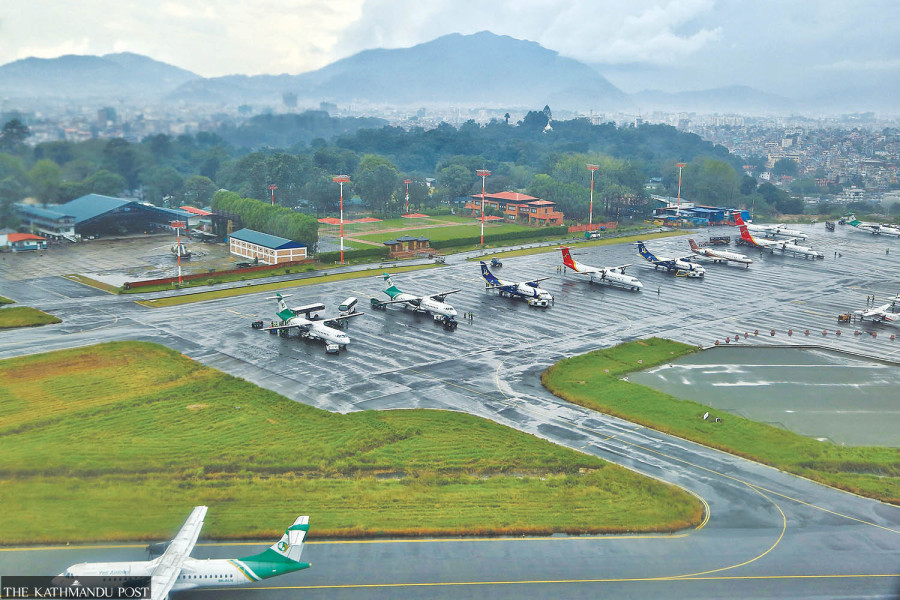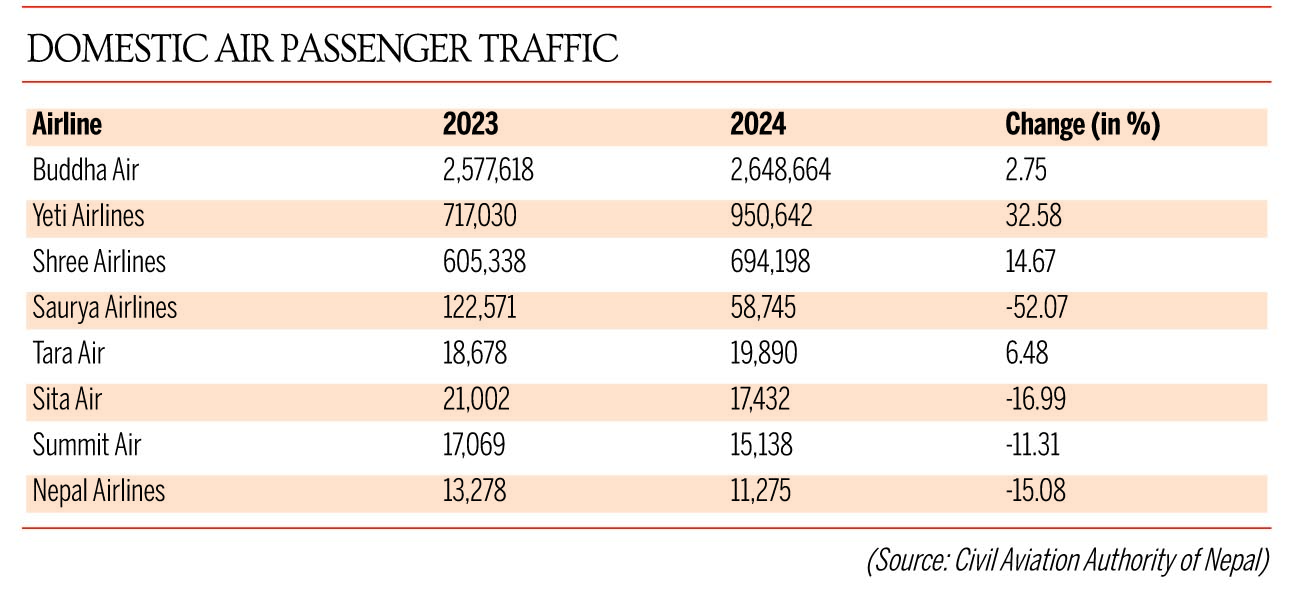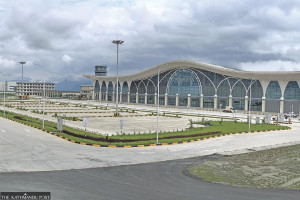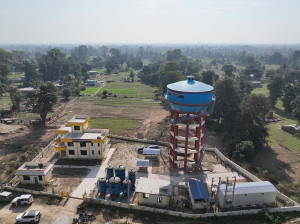Money
Domestic air travel rebounded in 2024
Nepal’s airlines carried 4.47 million passengers last year. Spike happened after rains shut highways in September.
Sangam Prasain
Domestic air travel, which faced severe setbacks due to the economic slowdown, high taxes, and crashes in 2023, experienced a revival in 2024, achieving a 7.72 percent year-on-year growth.
The surge in passenger numbers during the festive season was further amplified when heavy rainfall in late September shut down all highways connecting the Kathmandu Valley.
Nepal’s domestic airlines—eight fixed-wing operators and 11 helicopter companies—carried a record 4.47 million passengers last year. This marked the highest passenger traffic ever recorded.
The number of domestic air travellers has soared more than fourfold since 2000, when only 853,000 passengers took to the skies, as air travel was once deemed a luxury.
According to Tribhuvan International Airport statistics, domestic airlines gained 320,485 more passengers in 2024 than the previous year.
“A deluge that inundated parts of Nepal in late September boosted domestic airlines’ occupancy,” said Dipendra Kumar Karna, communication manager at Buddha Air. “All domestic airlines experienced 100 percent occupancy for three consecutive months.”
In this period, Buddha Air flew more than 10,000 passengers daily.
Tickets became unavailable due to the festive rush, and airfares hit record highs.
The heavy rainfall from September 26 to 28, 2024, triggered floods and landslides across the country, causing a loss of Rs46.68 billion to Nepal’s economy. Physical infrastructure sector suffered the most damage, followed by the social and productive sectors.
A government report revealed that 41 roads and highways were damaged, many of which connected the Kathmandu valley.
Tribhuvan International Airport recorded 102,714 domestic flight movements—landings and takeoffs—in 2024, reflecting a 5.90 percent increase from 2023. This means Kathmandu airport handled over 280 flight movements a day.
Despite the growth, domestic flight movements in 2024 was below the 2022 peak, when airlines logged 108,202 flights, the highest on record.
In 2022, as Covid cases declined, airlines introduced promotional fares to attract passengers, even as fuel prices soared to Rs190 a litre, resulting in unprecedented passenger numbers.
However, Nepal slipped into its first recession in six decades in 2023, weighed down by inflation and political instability. The downturn rippled through the travel sector.
Although jet fuel prices dropped to Rs136 a litre in 2023, the impact on domestic airline occupancy was minimal.
This was further compounded by the fatal Yeti Airlines crash on January 15, 2023, which killed all 72 people on board and also discouraged many from flying.
Then the government imposed a 13 percent VAT on air tickets in mid-September 2023, making flights more expensive.
Additionally, the civil aviation body doubled the service charge for domestic passengers and tripled it for international travellers.
According to airline officials, 2023 was the worst year for airlines, even worse than the Covid period.
“Nevertheless, 2024 exceeded airline companies’ expectations,” said Karna.
Insiders predict passenger numbers will continue to grow for the next four to five years until highway construction and expansion projects are completed.

While privately owned airlines have expanded their fleets in response to airport infrastructure improvements, experts argue that new airports—Bhairahawa and Pokhara—have not significantly contributed to the aviation industry's growth.
The installation of night-flight infrastructure at nine airports has enabled airlines to operate three shifts, offering 18 hours of service daily. Rajbiraj airport in Saptari is the latest addition to the list of airports with night-flight capabilities.
Previously, planes could only operate until 5 pm.
Buddha Air led in passenger carriage in 2024, flying 2.64 million—an increase of 2.75 percent—securing a 60 percent market share with its 18-aircraft fleet.
Yeti Airlines, recovering from its 2023 crash in Pokhara, flew 950,642 passengers in 2024, up 32.58 percent.
Shree Airlines, which entered fixed-wing services in April 2017, carried 694,198 passengers, marking a 14.67 percent year-on-year rise.
Saurya Airlines, launched in November 2014, flew 58,745 passengers in 2024, a 52.07 percent drop after its Bombardier CRJ-200 crash in July. The airline is preparing to resume operations, which is pending regulatory approval.
Yeti’s subsidiary Tara Air, operating in remote areas, saw a modest 6.48 percent growth, flying 19,890 passengers.
Sita Air recorded a 16.99 percent decline, carrying 17,432 passengers in 2024.
Summit Air’s passenger numbers fell by 11.31 percent to 15,138.
State-owned Nepal Airlines had a tough year, with passenger numbers dropping by 15 percent to 11,275.
Nepal Airlines’ decline followed its decision to ground all six Chinese-made planes in 2020 to cut losses, leaving only two vintage Twin Otters in operation.




 11.12°C Kathmandu
11.12°C Kathmandu













